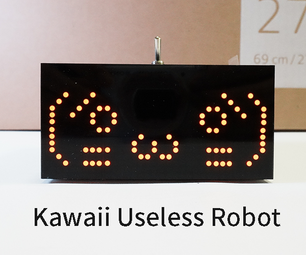Introduction: Static Electricity Detector
We are Cougar Robotics 4251 and this is for the Instructables Sponsorship Program.
Step 1: What You'll Need
Parts:
1. MPF-102 (N-channel FET and our preferred transistor) or NTE-326 Transistor
2. 1 Meg Reistor
3. LED (we like "Super Green")
4. 9V Battery Terminals
5. 9V Battery
Tools:
1. Soldering Iron
2. Wire clip holding helper (not necessary but helpful)
1. MPF-102 (N-channel FET and our preferred transistor) or NTE-326 Transistor
2. 1 Meg Reistor
3. LED (we like "Super Green")
4. 9V Battery Terminals
5. 9V Battery
Tools:
1. Soldering Iron
2. Wire clip holding helper (not necessary but helpful)
Step 2: Solder Together
The circuit diagram is here. When soldering, there is no real need for extra wires depending on the type 9V terminal you are using. All of the electronics come with leads that are long enough to directly solder together.
There are two versions of this you can make, one with a switch and one without. We like the one with the switch because it has a bigger 9V battery case and you do not have to remove the battery to turn the detector off. The one without a switch is simpler, however, and still functions to the same effectiveness. We have pictures of both styles.
There are two versions of this you can make, one with a switch and one without. We like the one with the switch because it has a bigger 9V battery case and you do not have to remove the battery to turn the detector off. The one without a switch is simpler, however, and still functions to the same effectiveness. We have pictures of both styles.
Step 3: How to Use
insert a battery and wave over your robot! The key is to look for where the light changes from on to off or vice versa. If the light is constant on or off, it is fine either way.











